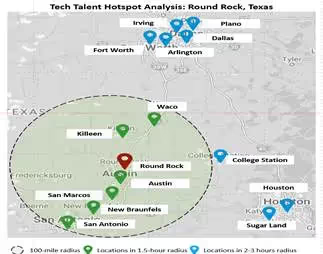How Talent Acquisition can Influence the Trajectory of your Business
During a meeting with one of the senior leaders, I learned that Workforce Planning and Talent Acquisition are facing a branding challenge. The perspective shared was that despite making significant contributions to the enterprise, we often fail to communicate our efforts internally and across various ecosystems effectively. I found this insight to be crucial. As we approach our yearly planning for 2024 and beyond, I have documented some thoughts on the significance and key initiatives we should prioritize.
Below are a couple of case studies highlighting the significance of Talent Acquisition in securing key talent that significantly influenced the trajectory of companies.
Around the 2014-2015 time frame, Novartis shut down its vaccine program, and a key scientist, Philip Dormitzer, joined Pfizer in 2015. Philip Dormitzer became Pfizer’s Chief Scientific Officer and developed the vaccine protocols. This process helped Pfizer in vaccine development. It proved to be a wrong move for Novartis, which is currently working on reorganizing to evolve as a more scientific innovation company. By hiring key leaders when they are let go, you can improve not only retention but also innovation (Moonshots by Pfizer CEO – Dr. Albert Bourla)
Tesla encountered numerous hurdles in its Powertrain development, leading them to recruit Peter Rawlinson, with Talent Acquisition assistance from Lotus Motors.
Peter Rawlinson served as the Vice President of Vehicle Engineering and Chief Engineer for the Tesla Model S at Tesla. His association with Tesla commenced in 2010, during which time he was responsible for overseeing the technical implementation and successful launch of the Model S. Rawlinson played a pivotal role in enhancing the structural design and production processes of the Model S, leveraging the increased flexibility provided by electric vehicle drivetrains.
Here are three strategies that may be helpful as you get ready for your strategic meetings
1.0 Passive Candidate Hiring:
I recently interviewed a few leaders on what they are doing in this space. Here is the summary.
To excel in Passive Hiring, relying solely on AI is insufficient. Instead, it’s essential to approach it as an intelligence-driven strategy. This involves:
- Creating a targeted list of the top 50 talent peers, which may span beyond your industry.
- Maintaining an ongoing list of the top 100 plus potential innovators across these peers.
- Leveraging a strong social media presence to showcase digital initiatives, projects, and company achievements.
- Engaging potential candidates through activities like hackathons catering to technical and non-technical positions.
- Continuously refining and updating your target lists to ensure effectiveness in Passive Hiring.
2.0 Skills Mining:
By the time Skills reach JDs, it may be too late. Draup has developed a framework of sources for the same. Workforce Planners should monitor a diverse set of sources for the same. The following are the important categories of sources
- Specialized research institutes like MIT School of Design and similar institutes
- University academic course data, professor research, and papers
- Global Labor Boards data, especially the ones that have recently been updated,
- Learning Ecosystems such as Nasscom Future Skills
3.0 An updated and expanded view of the Geographies

Recruiters and Workforce Planners must maintain an up-to-date and broad perspective on various geographical regions. Consider Dublin an example; it’s witnessing a constant influx of new innovative companies, with recent expansions like Rippling last month. Moreover, since the pandemic, there has been an increased dispersal of business activities into nearby cities. For instance, you can observe the growth of the tech ecosystem in Austin as a noteworthy example of this trend.
Innovative Labor Impact Strategies around the Globe
Antler Talent Incubator in the Nordics distinguishes itself from typical startup incubators and accelerators. Unlike others who primarily work with established companies seeking help with various aspects of their business, such as refining their ideas or securing investment and product-market fit, Antler welcomes individuals who aspire to build a company. These aspiring entrepreneurs may not have a well-defined business concept or a co-founder. Antler’s approach is reminiscent of London-based talent investor Entrepreneur First. Their six-month program is designed to connect potential founders and foster an environment where innovative startup ideas can take shape.










.svg)




















.svg)





.svg)
